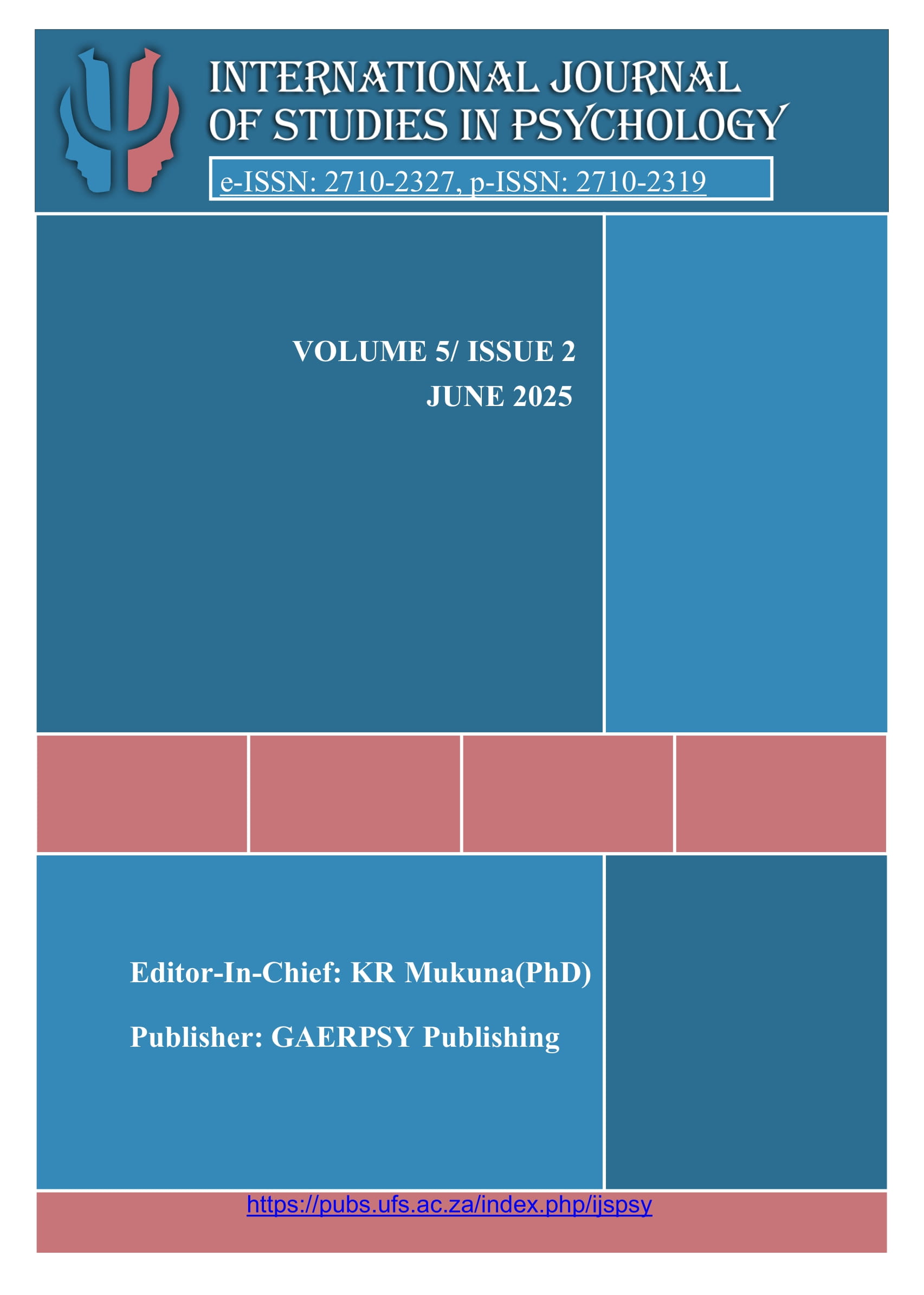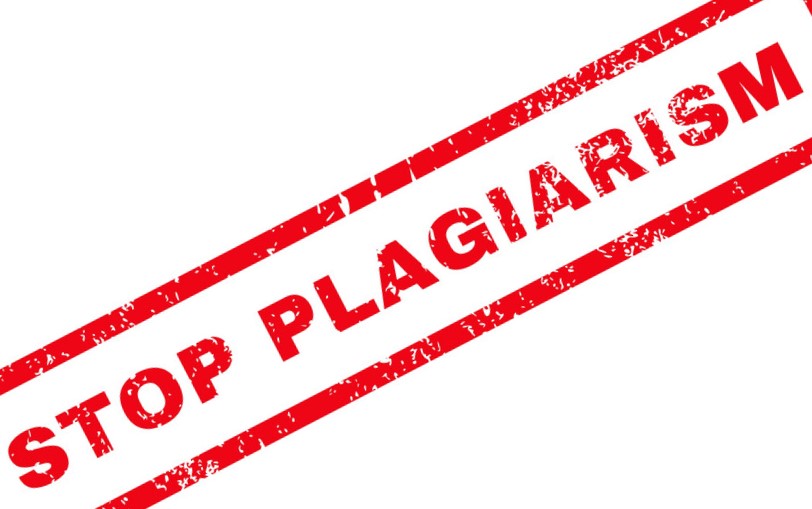Strategic steps in promoting gender diversity in South African high schools: A parental perspective on queering cisnormativity
DOI:
https://doi.org/10.38140/ijspsy.v5i2.1749Keywords:
Cisgender (Cis), Cirsnormative schooling, Cisnormativity, Gender diversity, High schools, Queering, Transgender (Trans)Abstract
It is important to note that transgender learners experienced gender discrimination, misgendering, and bullying at South African High Schools. Based on parental perspectives, this paper presents the strategies that can be used in South African high schools to promote gender diversity. This considers reconceptualisation of gender to enable parents to challenge the factors that act as barriers to the promotion of gender diversity and ensure that the schooling environment is an inclusive one for both trans and cis learners. This paper thus suggests a strategic step that can be used to queer religion and culture to promote gender diversity. This study provides strategies in a three-step guide that parents can use to transform South African high schools into more inclusive environments and to queer cisnormativity.
References
Baker, A., Ali, A., Ali, S., & Khan, M. A. (2024). Socio-Cultural Barriers to Transgender. Social Science Review Archives, 2(2), 364-370. Retrieved from https://policyjournalofms.com/index.php/6/article/view/81
Barnhart, W. R., Cui, S., Cui, T., Hong, D., & He, J. (2023). Transgender congruence, body appreciation, body dissatisfaction, and disordered eating in Chinese transgender adults. International Journal of Eating Disorders, 56(6), 1125-1134. https://doi.org/10.1002/eat.23932
Bhana, D. (2022). Primary school teachers misrecognizing trans identities? Religious, cultural, and decolonial assemblages. Teachers College Record, 124(8), 98-120. https://doi.org/10.1177/01614681221121530
Blackwood, E., & Wieringa, S. E. (1999). Female desires: Same-sex relations and transgender practices across cultures. New York: Columbia University Press.
Bond, J. (2016). Gender and non-normative sex in sub-Saharan Africa. Michigan Journal of Gender & Law, 23(1), 65-146.
Bottoman, L. (2021). The Experiences of Transgender Learners in Compulsory Heteronormative School Environments, (Unpublished Masters’ thesis). Johannesburg, University of Johannesburg, South Africa.
Bowers, M. M., & Whitley, C. T. (2020). What drives support for transgender rights? Assessing the effects of biological attribution on US public opinion of transgender rights. Sex roles, 83, 399-411. https://doi.org/10.1007/s11199-019-01118-9
Butler, J. (2004). Undoing Gender (1st ed.). Routledge. https://doi.org/10.4324/9780203499627
Butler, J., & Trouble, G. (1990). Feminism and the Subversion of Identity. Gender trouble, 3(1), 3-17.
Campbell, M., Hinton, J. D., & Anderson, J. R. (2019). A systematic review of the relationship between religion and attitudes toward transgender and gender-variant people. International journal of transgenderism, 20(1), 21-38. https://doi.org/10.1080/15532739.2018.1545149
Chaka, J. (2024). Exploring parental understanding of gender diversity in high schools: Literature-based study. International Journal of studies in Psychology, 4(2), 42-49. https://doi.org/10.38140/ijspsy.v4i2.1300
Clayton, A. (2023). Gender-affirming treatment of gender dysphoria in youth: a perfect storm environment for the placebo effect—the implications for research and clinical practice. Archives of Sexual Behavior, 52(2), 483-494. https://doi.org/10.1007/s10508-022-02472-8
Colliver, B., & Duffus, M. (2021). Queer space: Toilet provision, access and inclusion in the West Midlands. Sexuality Research and Social Policy, 19, 1483–1495. https://doi.org/10.1007/s13178-021-00658-8
Crawford, R. (2003). What is religion? London and New York: Routledge.
Ferfolja, T., & Ullman, J. (2021). Inclusive pedagogies for transgender and gender diverse children: Parents’ perspectives on the limits of discourses of bullying and risk in schools. Pedagogy, Culture & Society, 29(5), 793-810. https://doi.org/10.1080/14681366.2021.1912158
Feuerbach, L. (2024). The essence of religion (Vol. 7). Porto: Livraria Press.
Francis, D. (2024). You gotta pull yourself towards yourself. A sociological analysis of how Transgender and Gender Diverse (TGD) school attending youth, school managers, and teachers understand and respond to transphobia in South African schools. Teachers and Teaching, 30(1), 16-31. https://doi.org/10.1080/13540602.2023.2225417
Francis, D. A. (2023). A square peg in a round hole. Transgender and gender diverse youth and schooling in South Africa. Sexualities. https://doi.org/10.1177/13634607231212850.
Francis, D. A. (2024). Did you just say I was lit? Transgender and non-binary youth doing gender; resisting cisnormativity in South African schools. Journal of Gender Studies, 33(5), 686-697. https://doi.org/10.1080/09589236.2023.2172386
Francis, J., Sachan, P., Waters, Z., Trapp, G., Pearce, N., Burns, S., Lin, A., & Cross, D. (2022). Gender-neutral toilets: A qualitative exploration of inclusive school environments for sexuality and gender diverse youth in Western Australia. International Journal of Environmental Research and Public Health, 19(16), 10089. https://doi.org/10.3390/ijerph191610089
Galek, K., Flannelly, K. J., Ellison, C. G., Silton, N. R., & Jankowski, K. R. (2015). Religion, meaning and purpose, and mental health. Psychology of Religion and Spirituality, 7(1), 1-12. http://dx.doi.org/10.1037/a0037887
García Vega, E., Camero García, A., Fernández Rodríguez, M., & Villaverde González, A. (2018). Suicidal ideation and suicide attempts in persons with gender dysphoria. Psicothema. 30(3), 283-288. https://doi.org/10.7334/psicothema2017.438
Garofalo, E. M., & Garvin, H. M. (2020). The confusion between biological sex and gender and potential implications of misinterpretations. In Sex estimation of the human skeleton (pp. 35-52). Amsterdam: Elsevier.
Gensler, H. J. (2013). Ethics and the golden rule. New York: Routledge.
Guzman-Parra, J., Sánchez-Álvarez, N., Guzik, J., Bergero-Miguel, T., de Diego-Otero, Y., & Pérez-Costillas, L. (2023). The impact of stressful life events on suicidal ideation in gender dysphoria: a moderator effect of perceived social support. Archives of Sexual Behavior, 52(5), 2205-2213. https://doi.org/10.1007/s10508-023-02594-7
G?fur?v, B. (2023). The Relationship between Culture and Language in Learning Process. ??????????? ?????? ?????????? ????, ????????? ? ????????, 3(5), 55-63. https://www.doi.org/10.5281/zenodo.7901915
Howansky, K., Wittlin, N., Bonagura, D., & Cole, S. (2022). Him, her, them, or none: Misgendering and degendering of transgender individuals. Psychology & Sexuality, 13(4), 1026-1040. https://doi.org/10.1080/19419899.2021.1978529
Jensen, J. S. (2019). What is religion? London: Routledge. https://doi.org/10.4324/9781315729466
John, C., & Henry, N. (2024). Exploring how Parents can Promote Gender Diversity in South African High schools. Journal of Ecohumanism, 3(8), 5967–5978. https://doi.org/10.62754/joe.v3i8.5204
Jule, A. (2022). Gender theory. In Encyclopedia of quality of life and well-being research (pp. 1-4). Cham: Springer International Publishing.
Leaper, C. (2023). Gender and social?cognitive development. In R. M Lerner (Series ed.), L. S, Liben, & U. Muller (eds.), Handbook of child psycholoogy and development science, Congitive processes (7th ed., Vol. 2)(pp. 806-853), New York: Wiley. https://escholarship.org/uc/item/0m44z448
Lorber, J., & Farrell, S. A. (1991). The social construction of gender. Newbury Park: Sage Publications.
Mason, A., Crowe, E., Haragan, B., Smith, S., & Kyriakou, A. (2023). Gender dysphoria in young people: a model of chronic stress. Hormone Research in Paediatrics, 96(1), 54-65. https://doi.org/10.1159/000520361
Mauvais-Jarvis, F., Merz, N. B., Barnes, P. J., Brinton, R. D., Carrero, J.-J., DeMeo, D. L., De Vries, G. J., Epperson, C. N., Govindan, R., & Klein, S. L. (2020). Sex and gender: modifiers of health, disease, and medicine. The Lancet, 396(10250), 565-582. https://doi.org/10.1016/S0140-6736(20)31561-0
McLaren, D. (2017). Funding basic education. Basic education handbook–Education rights in South Africa, 36-73.
Olson, K. R., & Gülgöz, S. (2018). Early findings from the transyouth project: Gender development in transgender children. Child Development Perspectives, 12(2), 93-97. https://doi.org/10.1111/cdep.12268
Park, C. L. (2005). Religion and meaning. Handbook of the psychology of religion and spirituality, 2, 357-379.
Pino, M., & Edmonds, D. M. (2024). Misgendering, cisgenderism and the reproduction of the gender order in social interaction. Sociology, 58(6), 1243-1262. https://doi.org/10.1177/00380385241237194
Reygan, F. (2019). Sexual and gender diversity in schools: Belonging, in/exclusion and the African child. Perspectives in Education, 36(2), 90-102. http://dx.doi.org/10.18820/2519593X/pie.v36i2
Riggs, D. W., & Bartholomaeus, C. (2018). Cisgenderism and certitude: Parents of transgender children negotiating educational contexts. Transgender Studies Quartely, 5 (1), 67–82. https://doi.org/10.1215/23289252-4291529
Roy, S. (2024). Gender attributes are performative rather than expressive: An understanding of Feminism. Authorea Preprints. (unpublished manuscript) https://doi.org/10.31124/advance.13384466.v1
Roy, S., & Singh, M. (2024). The Institutionalization of Heteronormativity and Cisnormativity in Educational Institutes: A Review. International Journal of Interdisciplinary Approaches in Psychology, 2(4), 571-590.
Sewell, W. H. (2004). The concept (s) of culture. In G. M. Spiegel, (ed.) Practicing history (pp. 76-95). New York: Routledge.
Silva, D. C., Salati, L. R., Villas-Bôas, A. P., Schwarz, K., Fontanari, A. M., Soll, B., Costa, …., & Lobato, M. I. R. (2021). Factors associated with ruminative thinking in individuals with gender dysphoria. Frontiers in psychiatry, 12, 602293. https://doi.org/10.3389/fpsyt.2021.602293
Singer, M. G. (1963). The golden rule. Philosophy, 38(146), 293-314.
Smith, C. (2017). Religion: What it is, how it works, and why it matters. Princeton: Princeton University Press.
Solari, A. J. (2024). Sex chromosomes and sex determination in vertebrates. Boca Raton: CRC press.
Spencer-Oatey, H., & Franklin, P. (2012). What is culture. A compilation of quotations. GlobalPAD Core Concepts, 1(22), 1-21.
Surace, T., Fusar-Poli, L., Vozza, L., Cavone, V., Arcidiacono, C., Mammano, R., Basile, L., Rodolico, A., Bisicchia, P., & Caponnetto, P. (2021). Lifetime prevalence of suicidal ideation and suicidal behaviors in gender non-conforming youths: a meta-analysis. European Child & Adolescent Psychiatry, 30, 1147-1161. https://doi.org/10.1007/s00787-020-01508-5
Tadjimatova, G. (2023). Gender can vary across related languages. ??????????? ?????? ????????????? ????????????, 3(2), 75-77. https://www.doi.org/10.37547/ejar-v03-i02-p1-11
Ton, J. (2018). Judith Butler’s notion of gender performativity (Unpublished Bachelor thesis). Utrecht, Utrecht University, Netherlands.
Torgrimson, B. N., & Minson, C. T. (2005). Sex and gender: what is the difference? Journal of Applied Physiology, 99(3), 785–787. https://doi.org/10.1152/japplphysiol.00376.2005
Ubisi, L. (2021). Queering South Africa’s protective school policy for LGBT+ youth: The nare mphale case. Journal of Educational Studies, 2021(si1), 106-138. https://hdl.handle.net/10520/ejc-jeds_v2021_nsi1_a7
Unger, R. K. (1979). Toward a redefinition of sex and gender. American psychologist, 34(11), 1085. https://psycnet.apa.org/doi/10.1037/0003-066X.34.11.1085
Wilson, H. T. (2023). Sex and gender: Making cultural sense of civilization (Vol. 24). New York: Brill.
Published
How to Cite
Issue
Section
Copyright (c) 2025 John Chaka, Henry Nichols

This work is licensed under a Creative Commons Attribution-NonCommercial-NoDerivatives 4.0 International License.
All articles published by GAERPSY Publishing are under an Attribution-NonCommercial-NoDerivatives 4.0 International (CC BY-NC-ND 4.0) license, allowing author (s) to share copies and redistribute the material in any medium or format. The GAERPSY Publishing cannot revoke these freedoms if they follow the license terms:
• Attribution: Author (s) must give appropriate credit, provide a link to the license, and indicate if changes were made. Author (s) may do so reasonably but not in any way that suggests the licensor endorses his/her or thier use.
• NonCommercial: Author (s) may not use the material for commercial purposes.
• NoDerivatives: If author (s) remixes, transforms, or builds upon the material, he/she (they) may not distribute the modified material.
• No additional restrictions: Author (s) may not apply legal terms or technological measures that legally restrict others from doing anything the license permits.












